ELECTRIC DREAMS
Railway history is littered with ‘what ifs’, but one locomotive that was built and tested should have revolutionised the East Coast Main Line and made scores of iconic ‘Pacifics’ virtually pointless, as ALAN REET explains.
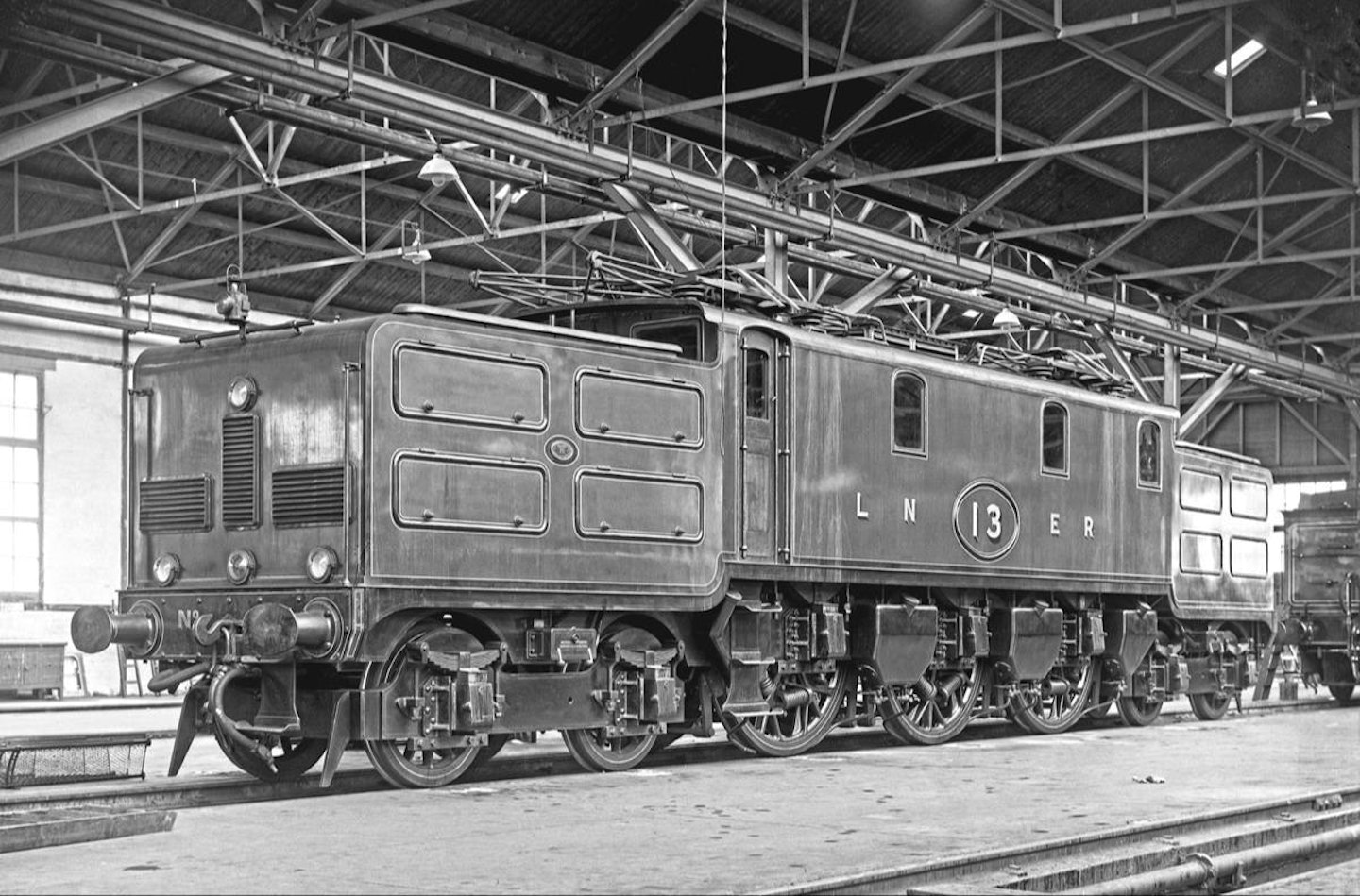
Agleaming Garter blue ‘A4’ screaming down from Stoke Summit on the East Coast Main Line is probably many people’s idea of what the peak achievement of Britain’s pre-war railway looked like. It might even be the most popular choice for representing the very pinnacle of UK railway accomplishment.
There is, however, an inconvenient truth; an almost parallel piece of railway history which, were it not for fate, should have meant that Nigel Gresley’s famous ‘A3’ and ‘A4’ class ‘Pacifics’ would never have even been built. One that in all probability would have sent steam locomotive, and railway, development in Britain along a completely different path. And a decision for which we’re all arguably still paying the price, even today in our daily interactions with the rail network.
Our story starts not with Gresley, but with George Stegmann Gibb, an Aberdonian who was appointed solicitor to the North Eastern Railway in 1883. Even though he was promoted to General Manager of the huge and prosperous railway company in 1890, his name is rarely at the forefront of railway histories, perhaps slightly unfairly.
In terms of railway administration, Gibb was a leading light. He was one of the first to really get to grips with data and how it could be used to better manage a railway. ‘Data analytics’ sounds cutting edge now, but this was the 1890s. He recruited Ralph Wedgwood (later London & North Eastern Railway General Manager) and Frank Pick (later famous for his role on the London Underground) to the NER. Notably open minded, Gibb also encouraged leading lights from the North Eastern Railway to travel abroad to learn about the latest worldwide railway developments – and bring their learnings back to York, Darlington or Gateshead.
One of those to benefit from Gibb’s worldly approach was Vincent Raven, a former NER apprentice at Gateshead and in his thirties at the time, who would soon be promoted to the role of Chief Assistant Locomotive Superintendent in 1893. Within months he was to start on a path that set him apart from most of his contemporaries, by broadening his horizons beyond the steam locomotive and investigating the possibilities offered by electric power.
His early interest in electric power was unlikely to have been a coincidence, given his engineering connections with Tyneside. The Merz family had strong links to Gateshead and Newcastle, and in 1899 Charles Merz was a founder of what became Merz and McLellan – an electrical consultancy that quickly led the field in power station development with constructions in the North East.
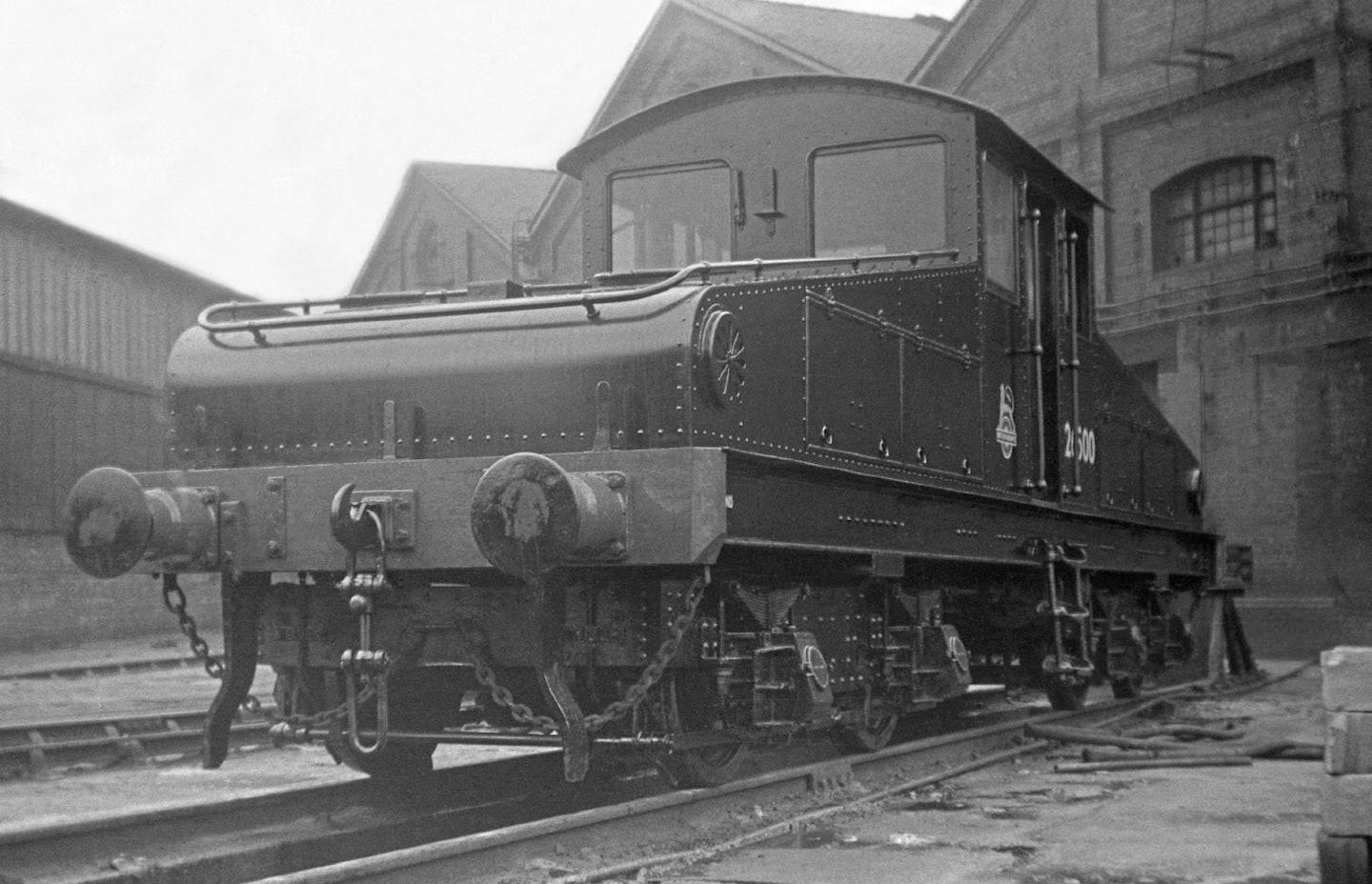
Cranes before trains
Raven’s first electrification, however, was not of railways, but of dockside cranes in Middlesbrough. Nevertheless, by 1901 he was involved in railway electrification – albeit a project that would seem to be a million miles away from the glamour of express passenger trains – the suburban railway electrification along the north of the River Tyne. During the construction of the third-rail electrified railway (itself a pioneering move), Raven would be involved in an NER trip to the United States – all the seeds for a radical moment in railway history had been sown.
The first North Eastern Railway electric locomotives (as opposed to multiple units) appeared in 1905, not surprisingly an American-inspired ‘steeple cab’ design to operate through a steeply graded tunnel to the Newcastle quayside.
In 1911, Merz and Raven journeyed to the USA together on a research trip that would have far-reaching implications. Their January 1912 report advocated the electrification of a stretch of main line with intensive freight operations. Raven’s proposal was agreed. By 1913, the North Eastern Railway was working on wiring the Shildon to Middlesbrough route at 1,500V DC at an estimated cost of £1.5 million – including ten 1,100hp electric locomotives. But that was not the report’s most ground-breaking suggestion. It also proposed electrifying the East Coast Main Line from York to Newcastle. Agreement was not immediately forthcoming – but it was not rejected outright either.
''Within months he was to start on a path that set him apart from most of his contemporaries, by broadening his horizons beyond the steam locomotive''
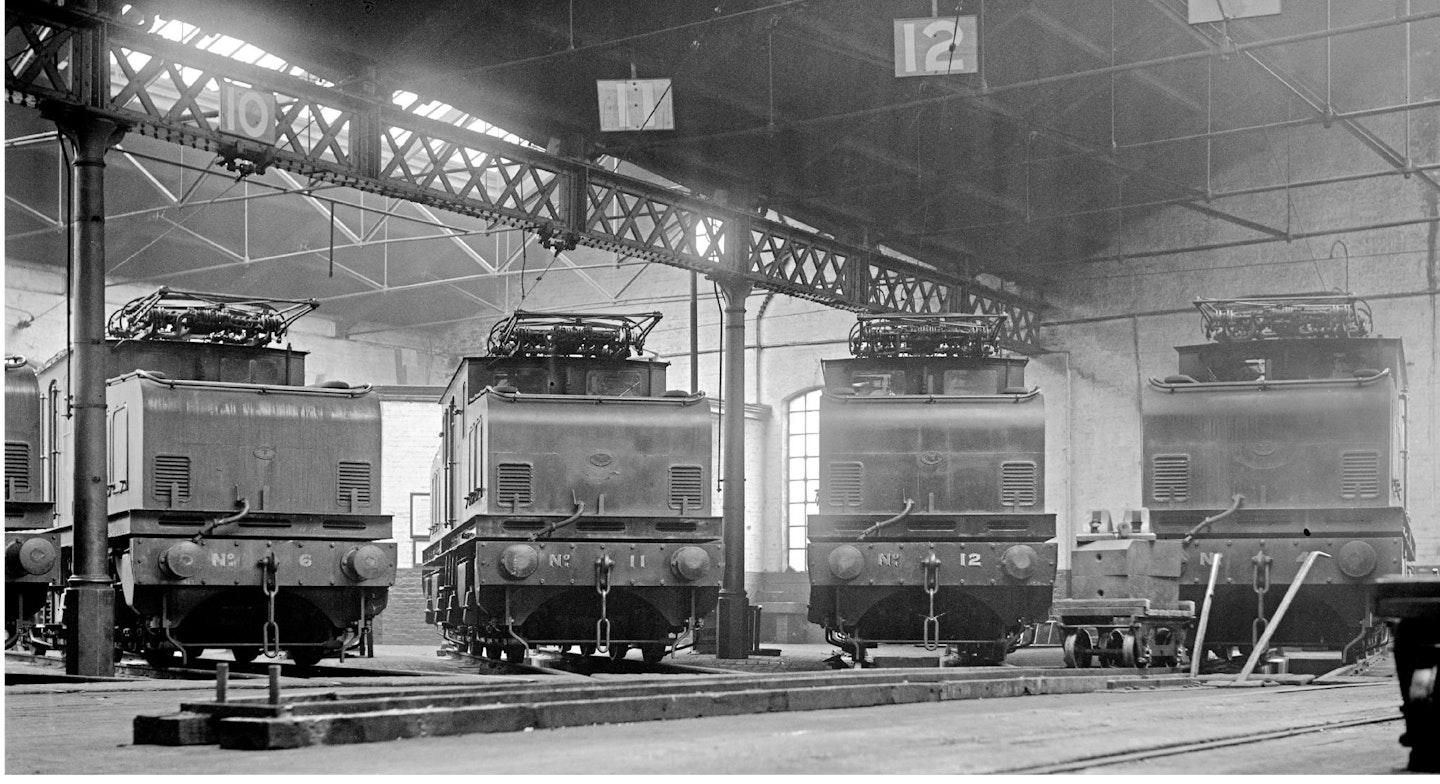
War did not stop the Shildon to Middlesbrough electrification, which was completed in 1915, but it did pause Raven’s East Coast aspirations. Straight after the conflict, however, the plan was dusted down and promoted with a new vigour. Raven promoted his electrification on a national and European stage – at a time when the widely held view was that electric traction was only really suited to suburban railways, not long-distance inter-city routes.
At a board meeting in July 1919 it was agreed that a committee would be appointed to consider the electrification. In September it duly reported back that: “The committee have examined proposals and have satisfied themselves in the view of the fact that there are considerable areas of engine maintenance to make good and that electric working would enable the traffic to be worked by a much smaller number of locomotives, the substitution of electric for steam power should be carried out at a figure which would justify the initial outlay provided agreement could be made for a supply of current.” It was resolved that the electrification scheme should be approved and the Ministry of Transport informed.
It should, perhaps, not be too much of a surprise that the Minister of Transport was apparently enthusiastic about the project. The minister was none other than former NER man Sir Eric Geddes. It was approved in principle, including locomotive construction, in January 1920.
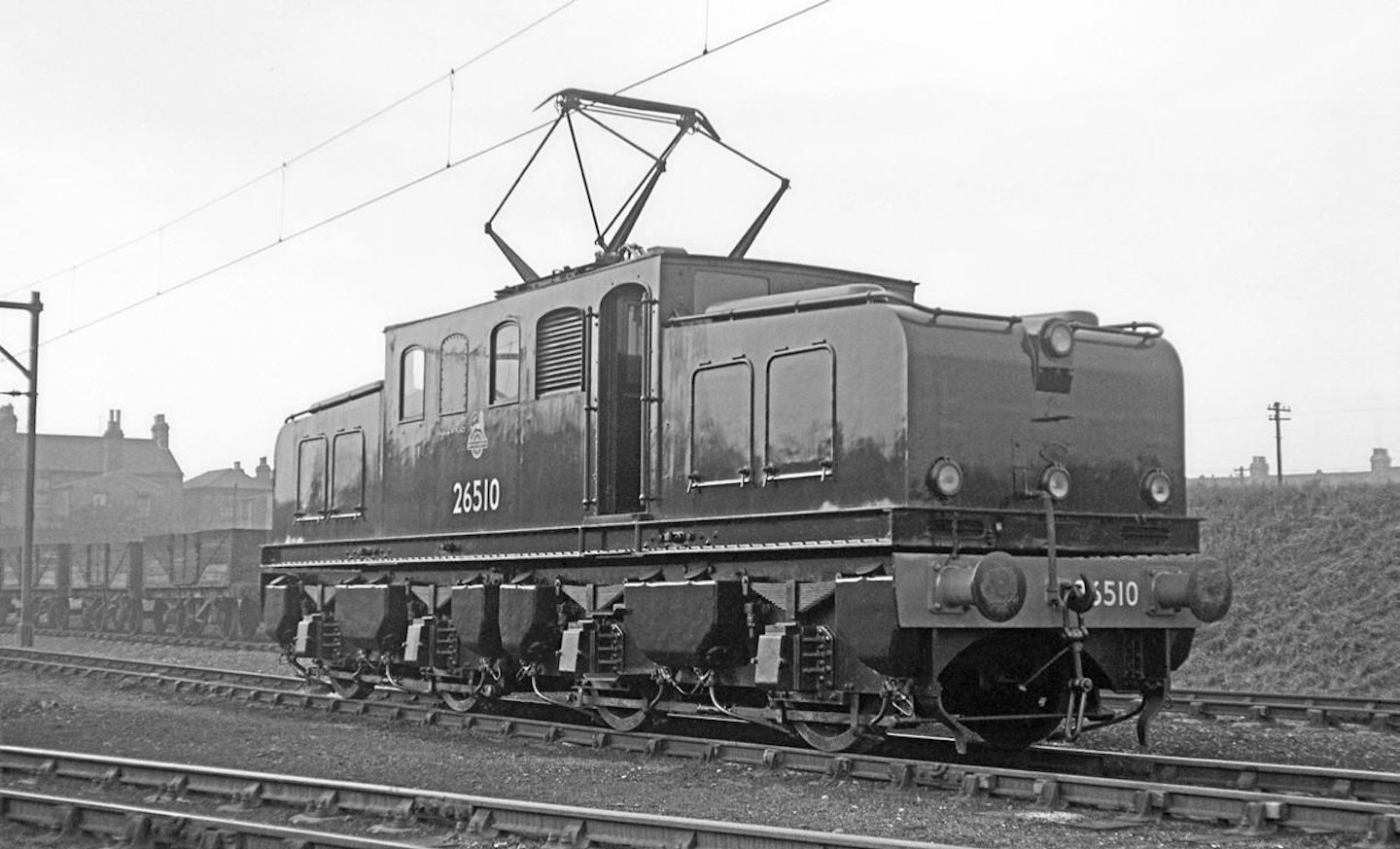
Eyes on expansion
This was to be no small-scale test project. It was an 80-mile electrification of one of the busiest main lines in the country. It would run from Dringhouses signal box to Newcastle Central station. At Northallerton, a link to the Shildon-Middlesbrough route would diverge. With an eye on future expansion he had also worked out where electricity supply could be sourced should the electrification eventually reach Doncaster too. There are plenty of hints that electrification of the whole ECML was in Raven’s mind. Amazingly, he planned to electrify only the first 100 yards of marshalling yards along the route though – after which battery locomotives would take over. The parallels with current policy more than a century later are quite stunning.
This was not just a paperwork exercise, however. Even before the committee had been formed, Raven had already received permission to build the first locomotive for this game-changing project… the first of 109, and the first main line electric locomotive in Britain.
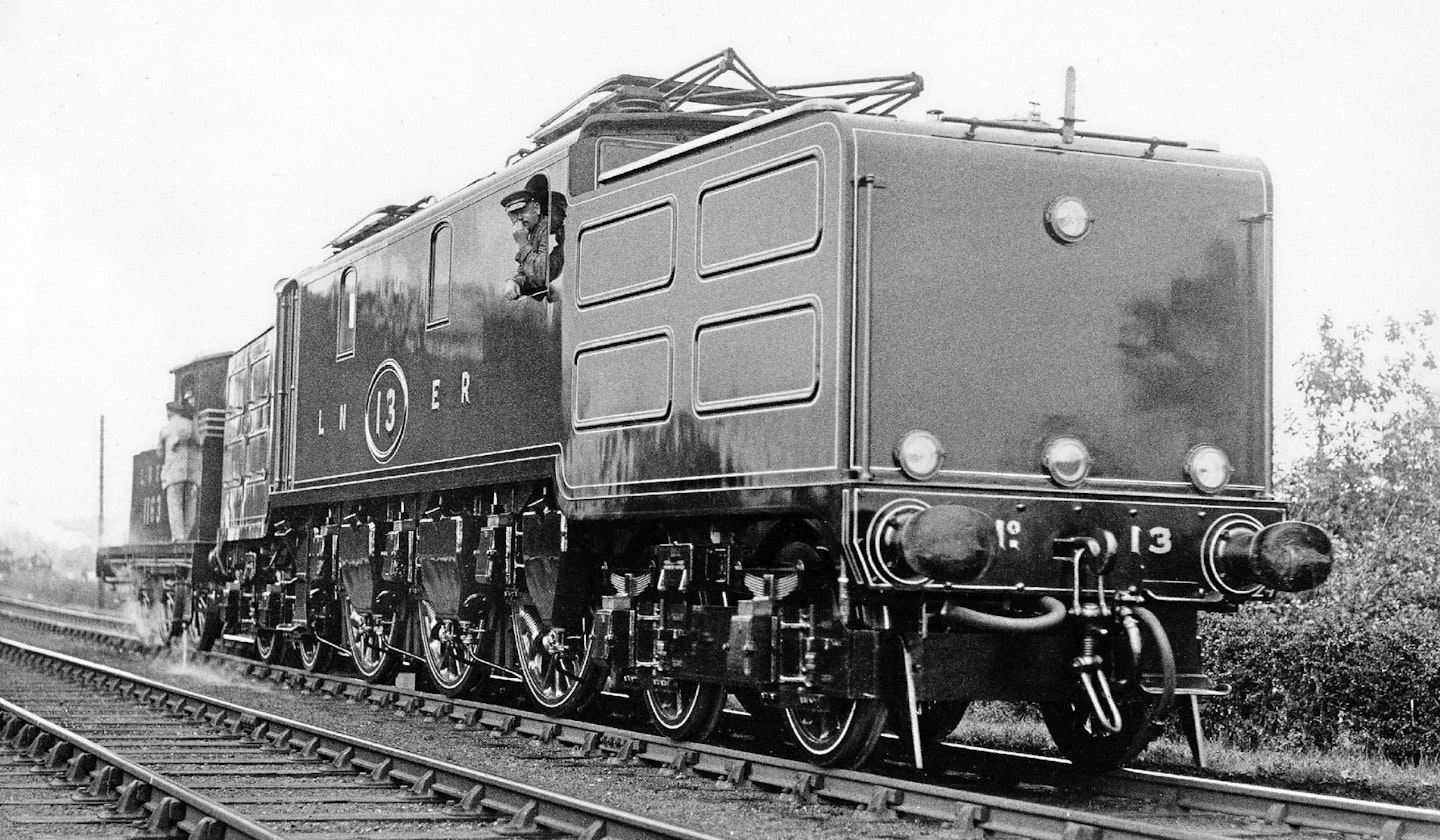
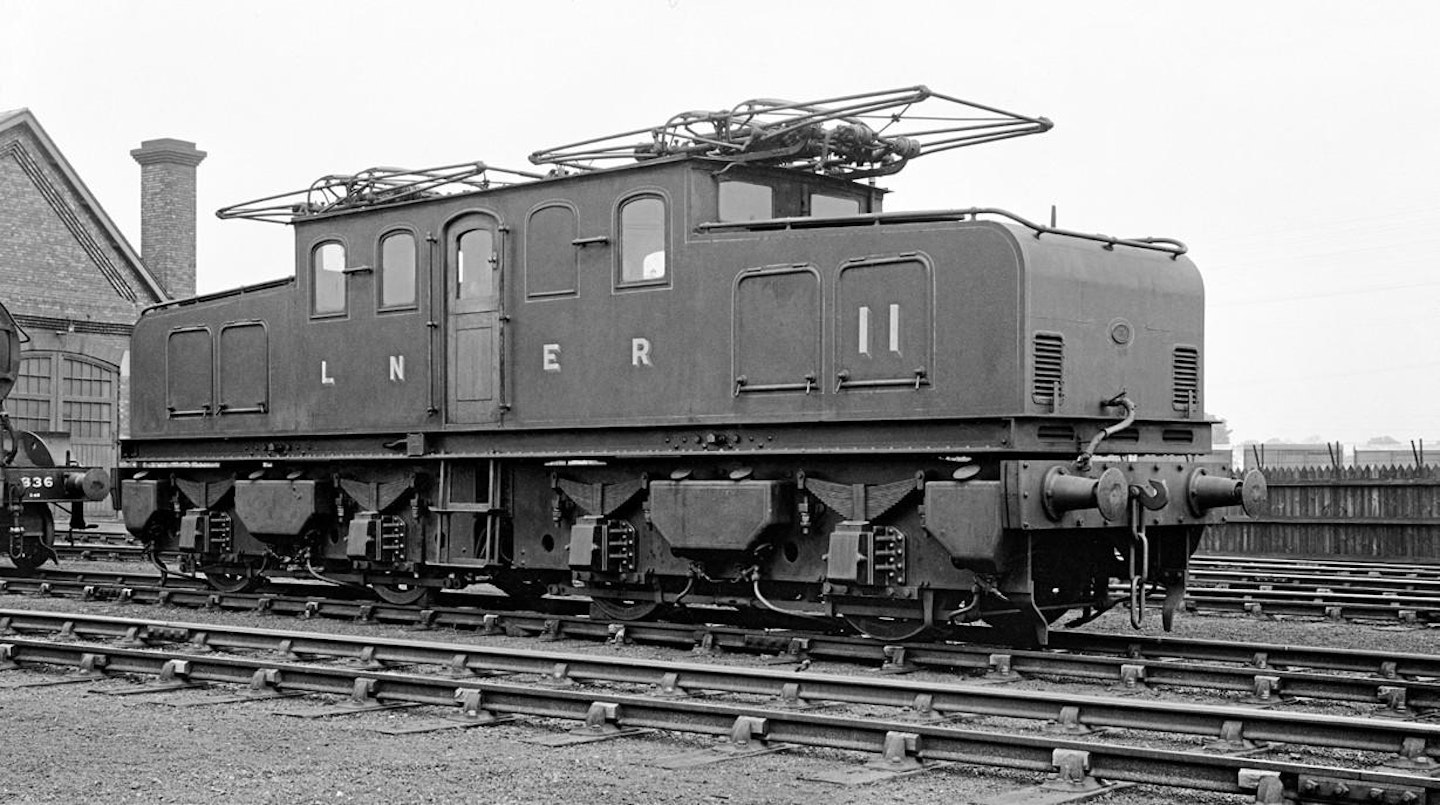

Conflicting numbers exist for the tractive effort of No. 13 – there are LNER‐attributed sources that measured it at 28,000lbs
The latest American thinking on electric railways had a substantial influence on Raven’s new traction, as he had recently visited General Electric in Schenectady. In fact, GE had produced drawings for an NER locomotive based upon its ‘EP2’ class in use on the Chicago, Milwaukee and St Paul Railway – which was then seen as the cutting edge of electrification. The locomotive would have had a 62ft 8in wheelbase, weighing in at 105 tons and with a top speed of 90mph. It would appear that this was Raven’s preferred option, but an NER sub-committee rejected it.
In the end, the North Eastern virtually went it alone. Raven’s passenger electric locomotive would be a 2-Co-2 in electric locomotive terminology, and more like a 4‐6‐4 in steam terms. It would be driven by twin motors above every powered axle with a quill transmission. The electrical equipment was ordered from Metropolitan‐Vickers in Manchester, but the locomotive would be assembled in Darlington.
An order for the construction of the passenger electric locomotive was made in January 1921. It was completed in May the following year. The initial estimate for what would become No. 13 was around £20,000. But the electrical equipment alone would cost £15,000 and all evidence suggests that the actual cost was higher – closer to £28,000.
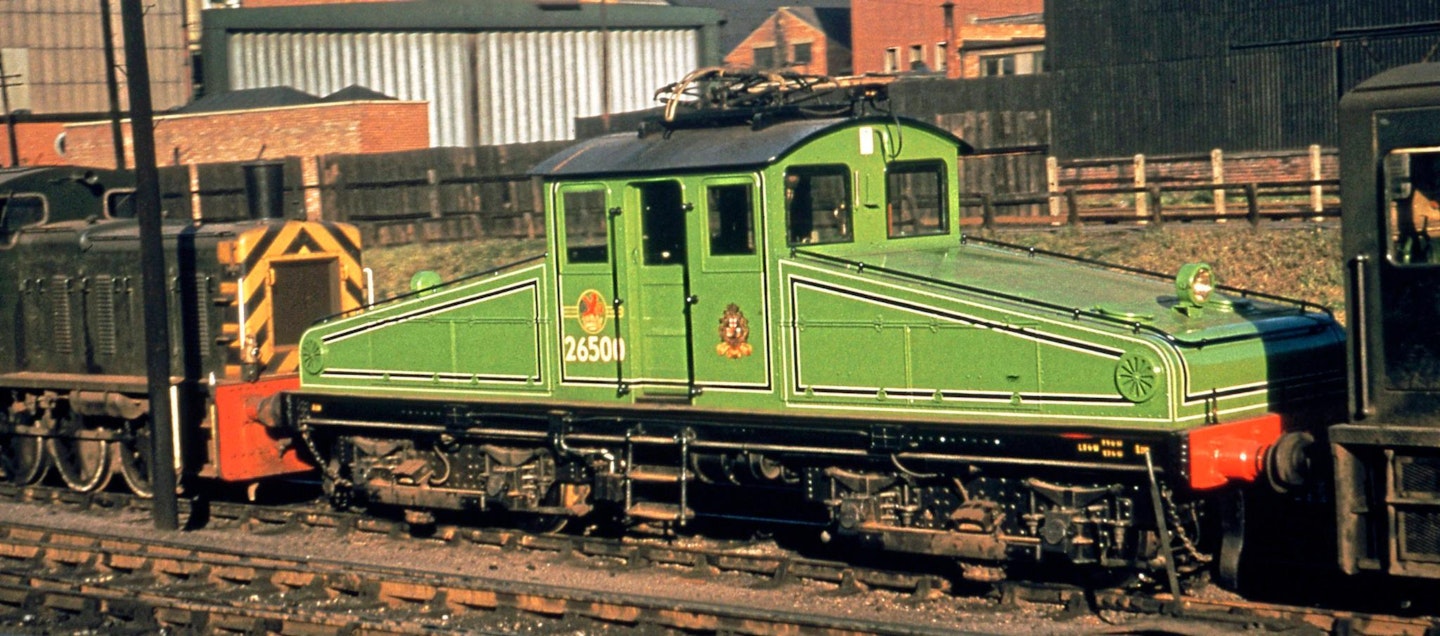
‘Pacific’ equivalent
The finished article weighed in at 102 tons; 18 tons 10cwt on each driving axle and 11 tons 12cwt on the trailing axles. In contrast to the American design, No. 13’s fixed wheelbase would be just 16ft – its overall length coming in at nearly 10ft shorter than the transatlantic proposal. With 6ft 8in driving wheels and 1,800hp, this was going to be no slouch and also had a quoted top speed of 90mph. With 15,900lbs of tractive effort (measured at 43mph) it packed a fair punch too. Conflicting numbers exist for the tractive effort of No. 13 – there are LNER‐attributed sources that measured it at 28,000lbs. Something around the latter figure seems quite likely given that No. 13 was, to all intents and purposes, intended to be the electric equivalent of Raven’s final steam design, his ‘Pacifics’, which had a tractive effort of 29,918lbs. This was British railway technology at least equalling the best available anywhere in the world. And of course the North Eastern Railway wasn’t going to put its name to some ugly duckling. The biographer of Raven, Andrew Everett described No. 13 rather elegantly: “The proportions of the whole design were typically late NER in that they were harmoniously symmetrical yet gave an impression of great power.” Particularly when contrasted with contemporaries in the USA or Switzerland, it’s difficult to argue.
A direct comparison between No. 13 and the best steam‐powered express passenger locomotives of the day was, sadly, never undertaken. However, the Raven electric was subjected to dynamometer car testing on the Shildon to Teesside stretch of the NER that had already been electrified. The most comprehensive tests were conducted with a 17‐carriage train weighing some 460tons. On a gradient of 1‐in‐103, No. 13 recorded an average speed of 42mph. On a gradient of around 1‐in‐230, it managed 58mph.
That might not sound earth‐shattering now – but this was 1922. The closest comparison would be the Great Western Railway and London & North Eastern Railway locomotive exchanges that settled the record in favour of the GWR in 1925. They pitted the ‘Castle’ class against Nigel Gresley’s ‘A1’ class ‘Pacific’ and were recorded enthusiastically by Cecil J. Allen.
In April and May, Allen recorded runs with ‘Castle’ class No. 4074 Caldicot Castle and ‘A1’ No. 4474 Victor Wild on the run from Exeter to Paddington. Beyond Westbury the locomotives needed to ascend a gradient of just over 1‐in‐220 – not too dissimilar to the gradients facing Raven’s electric during the dynamometer car trials. The ‘Castle’ achieved 61mph on the grade… with a train 80 tons lighter. The ‘A1’, despite having an even lighter train, managed just 53.5mph.
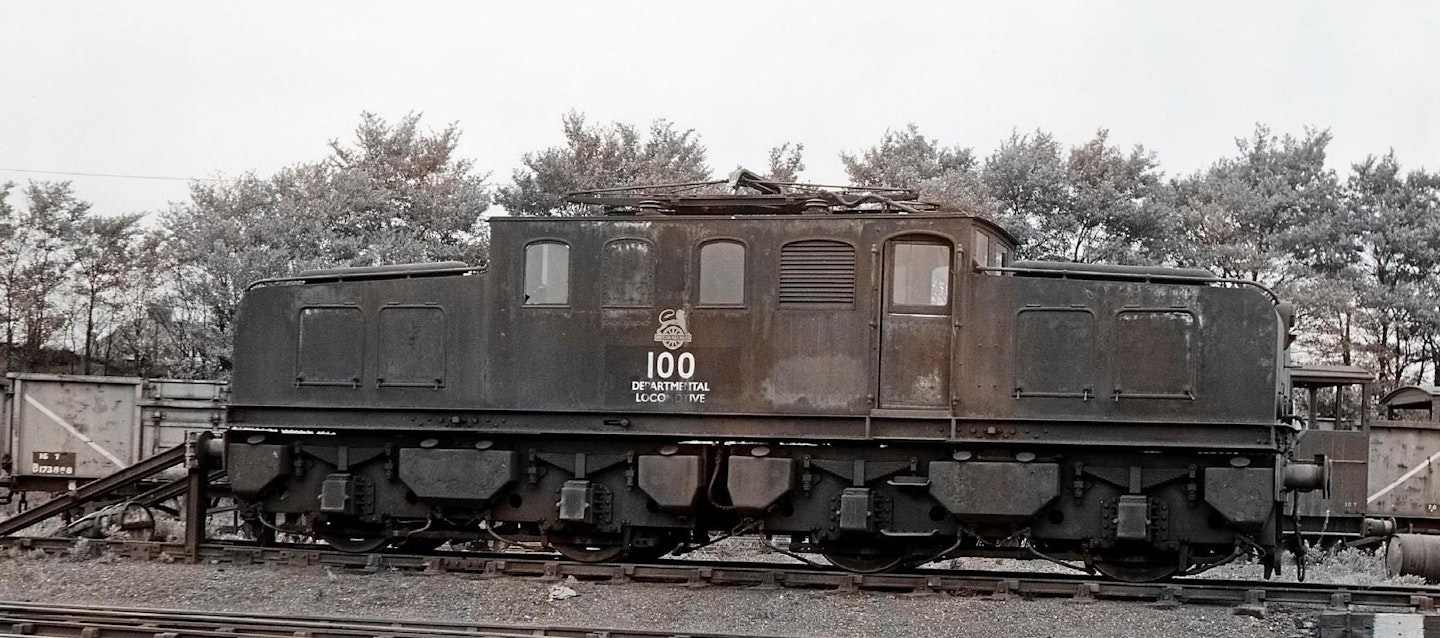
That electric traction was well within its capabilities during those initial dynamometer car tests can be demonstrated by the fact that Raven was seemingly not satisfied with ‘only’ taking a 17‐carriage, 460 ton train. On another trip, the load was 22 East Coast Joint Stock carriages, which must have represented a load approaching 600 tons. On this trip a limit was found as the electrical contactors burnt out – much to Raven’s anger. Metropolitan‐Vickers responded well to this anger and had the locomotive back in action just seven days later.
All of this naturally focuses on speed and power, but efficiency was a big part of the argument too. Raven estimated that 29 of his new electric passenger locomotives would replace 54 steam locomotives – a 25% saving. Even more impressive, he calculated that 155 steam freight locomotives could be replaced by just 80 electric locomotives. The saving from doing that was estimated at £121,025 per year.
Even with the limited testing, it seems clear that No. 13 would have utterly trounced anything else in traffic on the East Coast Main Line. And this was still just the prototype – imagine what a fully refined fleet of these cutting-edge machines could have done to the timetable. Or what that North Eastern Railway dynamometer car could have recorded if the wires had stretched down Stoke Bank where Gresley’s ‘A4’ No. 4468 Mallard would eventually go on to make the history books. Could we have seen a world rail speed record, and not just a record for steam traction by 1938?
It’s interesting to note that almost contemporaneously to the planning and construction of No. 13, the recently nationalised Swiss national railway, the SBB, had begun running electric trains on the mountainous and tortuous Gotthard railway over the Alps to Italy. The two were so close in conception, but the difference in the extent of electrification in both countries is stark; the Swiss railway network is essentially 100% electrified and has been for more than 50 years.
No. 13 itself became well fêted. It attended a host of celebrations, not least the 100th anniversary of the Stockton and Darlington Railway in 1925 – in LNER Apple green. There are various sources that claim No. 13 never made it beyond workshop grey livery in North Eastern days.
Between appearances though, it languished in the paint shops at Darlington.
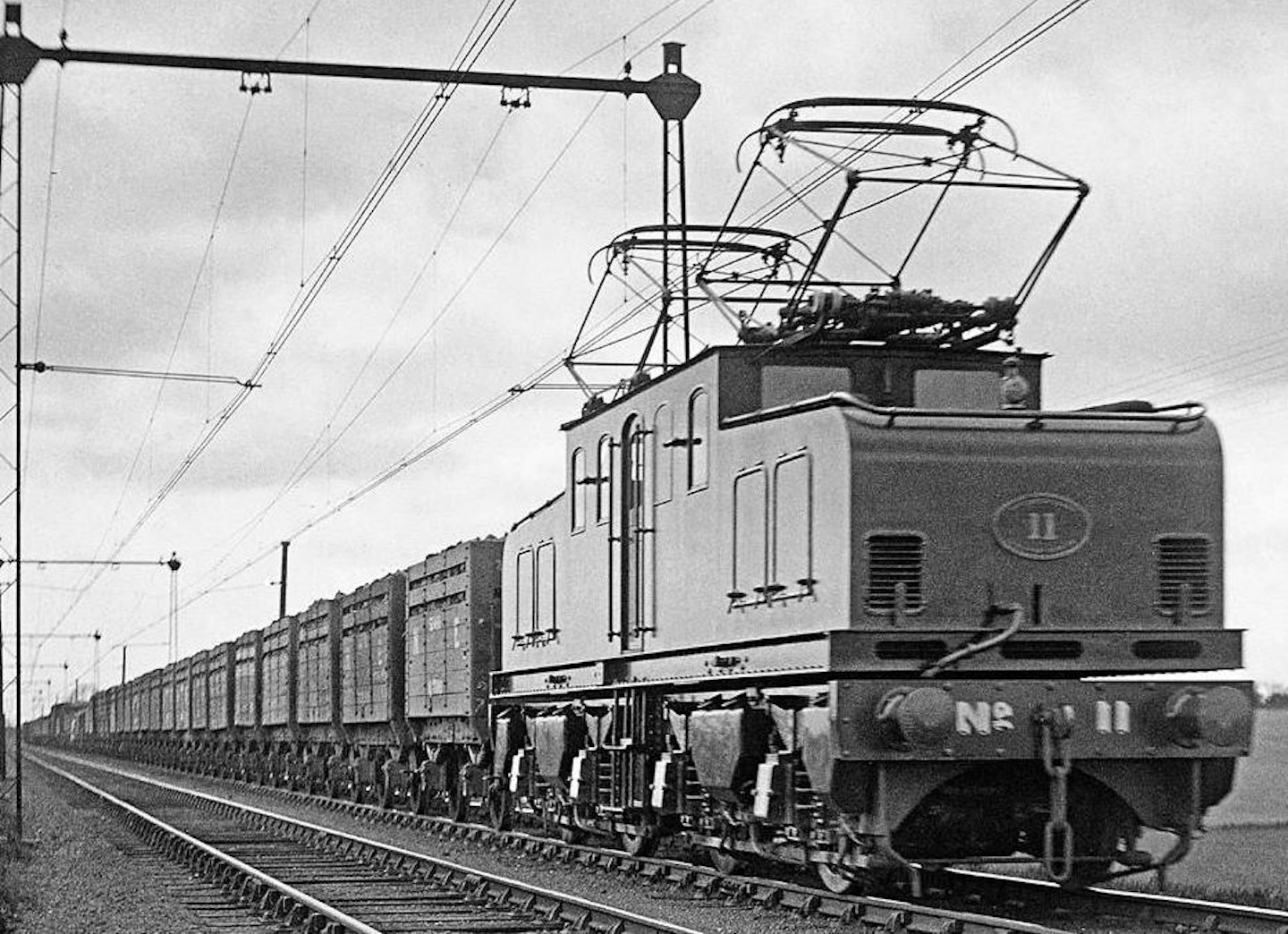
Tragedy… and a blessing
That the electrification of the East Coast Main Line didn’t come to pass in the 1920s is both a tragedy for British engineering and a blessing for steam traction at the same time. A world without Gresley’s ‘A4’ masterpiece, or where steam disappeared from British Railways before 1968 owing to widespread electrification, would have been a poorer one – certainly from a railway enthusiast’s perspective. Many historians have almost dismissed the project, giving it a footnote at best, but that fails to recognise just how serious the project was and just how close it came to realisation.
In almost any version of events apart from the one we got, the electrification would have taken place. The 1923 Grouping is often cited as the final death of the project, but it very nearly wasn’t. It’s important to remember that the London & North Eastern Railway was very NER ‐heavy on the management side and, as pointed out above, even the Minister of Transport who drew up the Grouping plan, Eric Geddes, was ex ‐NER.
One earlier version of the Grouping plan was apparently not a ‘Big Four’, but a ‘Big Six’, or even seven. Under those versions it would appear that the North Eastern Railway would have continued in much the same way as the Great Western. The two were seen as the most successful of the pre ‐Grouping companies, the NER in particular being a long-term financial success and virtual monopoly. Being lumped in with the far less financially secure Great Eastern and Great Central Railways would deal a serious blow to the combined economics of the group, even with the NER to prop it up. The cash for major electrification projects would suddenly go from being affordable to impossible.
Nevertheless, the North Eastern would be contributing the largest part of the locomotive fleet of a new London & North Eastern Railway. And Raven was without a doubt the prime candidate for the post of Chief Mechanical Engineer. By all accounts he was the board’s favoured man.
Had he taken the job, he would have done so with a passionate belief in electrification as the key driver of modernisation for the East Coast Main Line. There is much speculation as to exactly why Raven opted instead for retirement. Was it frustration with the slow progress of electrification? Was it the need to work in London and not his long ‐native North East? Was it just the fact that, at 64 years old, he felt the time was right?
It also needs to be remembered that Gresley and Raven were long-standing friends. They apparently met when Raven was responsible for East Coast Joint Stock carriages and Gresley was appointed as Great Northern Railway Carriage and Wagon Superintendent in 1905. Was he simply helping out an old friend?
We’ll never know what his thoughts were, but Raven retired on the last day of 1922. He continued to lecture on the benefits of railway electrification long after, and passed away on February 14 1934.
The following year the electrification of the Shildon to Teesside line was abandoned and the ten locomotives put into store, alongside No. 13. All of them survived into British Railways days, No. 13 becoming BR No. 26600. All but one of the electrics in store were scrapped in 1950 – including No. 13. The last of the Shildon electrics was scrapped in 1964 after a spell as Ilford car shed’s shunter on the Shenfield line. Only one NER electric locomotive survived: Newcastle quayside’s No. 1, later BR No. 26500, became part of the National Collection. The electrification scheme itself was first scaled back with a proposal to wire Darlington to Newcastle only, and then it was completely abandoned by the London & North Eastern Railway. It would be 1989 before electrification between York and Newcastle would finally begin, perhaps proving that Raven was simply well ahead of his time.
The LNER would return to main line electrification in its own final years, with the Woodhead route. Perhaps ironically that was also overtaken by a major reorganisation of Britain’s railways and it would only be completed in BR days. Just like the NER schemes, it never reached its full potential and also had a short and frustrating life.
Finally, just in case anyone thinks East Coast Main Line electrification was Raven’s only piece of epic foresight, it should be remembered that in 1906 he patented an in-cab signalling system – intended to increase safety at times of low visibility. Fast forward to 2025 and Network Rail is installing its modern equivalent at the King’s Cross end of the line right now… a mere 120 years after Raven’s system.
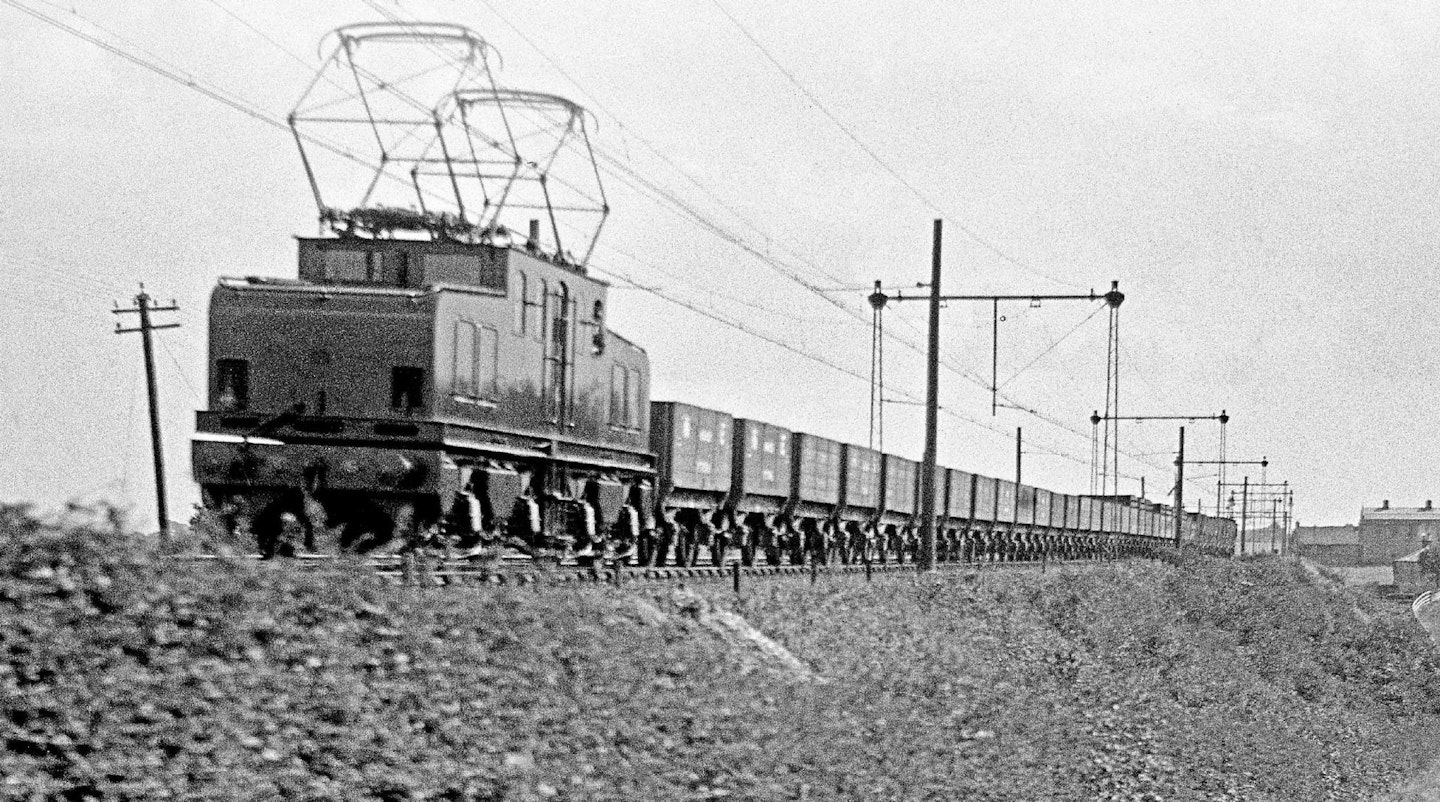
Each issue of Steam Railway delivers a wealth of information that spans the past, present and future of our beloved railways. Featuring stunning photography, exclusive stories and expert analysis, Steam Railway is a collector's item for every railway enthusiast.
Choose the right subscription for you and get instant digital access to the latest issue.

